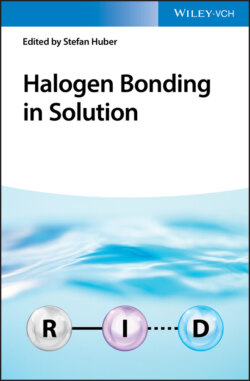Читать книгу Halogen Bonding in Solution - Группа авторов - Страница 17
1.1.6 Additional Nomenclature
ОглавлениеPrior to the IUPAC definition of the halogen bond, a variety of terms were used to describe the attractive interactions with halogens, many of which have been pointed out by Bent [17]. One term used in early halogen bond studies referred to the interaction as a donor–acceptor complex, a consequence of the focus on charge‐transfer studies. Thus, in many early papers, the halogen is referenced as an acceptor, signifying that the halogen was accepting electron density. This terminology has been mostly phased out when discussing halogen bonds. Other nomenclature found in the literature before the official IUPAC definition includes fluorine [18,19], chlorine [20,21], bromine [22], and iodine bonds [23,24]. While this terminology does specify which donor is operating, the use of the more inclusive halogen bond term is the preferred method of representing the interaction. The field generally distinguishes between inorganic and organic halogen bond donors, as the interaction profile (e.g. electrostatic, charge transfer, dispersion) in these species is usually different. There are other specific notations that have been embraced within the community such as the term charge‐assisted halogen bond [25–31]. The use of a formal charge, most often alkylation of Lewis basic sites (e.g. quaternization of amines), can result in a powerful electron‐withdrawing group. If the history of the hydrogen bond is any indication, there will surely be new terminology that arises to describe other unique halogen bond interactions in the future. Already, the halogen bond field has examples of hydrogen bond‐enhanced halogen bonds [14–16] and three‐center‐four‐electron halogen bonds [32–34].
The above section has been constructed to provide the newcomer with a general understanding of the halogen bond. To enrich this knowledge, the following section chronicles key developments that provide context to the 2013 IUPAC definition.
